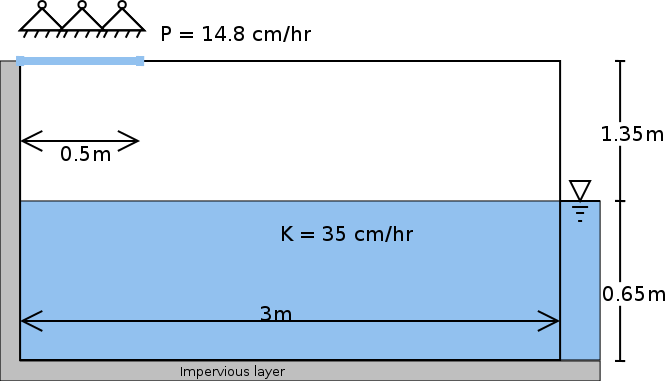SHUD - Simulator of Hydrological Unstructured Domain.
Website: www.shud.xyz
Author: Lele Shu www.shulele.net
Vauclin's experiment \citep{Vauclin1979} is designed to assess groundwater table change and soil moisture in the unsaturated layer under precipitation or irrigation. The experiment was conducted in a sandbox with dimension
The experiment's initial condition is an equilibrium water table under constant hydraulic head from the right side. That is, the saturated water table across the sandbox was kept stable at
Besides the parameters specified in \citep{Vauclin1979}, additional information is needed by the SHUD, including the
This mismatch may be due to (1) the aquifer description of unsaturated and saturated layers limiting the capability to simulate infiltration and recharge in the unsaturated zone, or (2) the horizontal unsaturated flow assumptions no longer hold at the relatively microscopic scales of this experiment.
The SHUD simulated the groundwater table at all four measurement points (see Fig. \ref{fig:vauclin}(b). The maximum bias between simulation and Vauclin's observations is $ 4.6cm$, with
The simulations, compared against Vauclin's experiment, validate the algorithm for infiltration, recharge, and lateral groundwater flow. More reliable vertical flow within unsaturated layer requires multiple layers, which is planned in next version of SHUD.
The R scripts include:
- Build the Vauclin experiment
- Generate the physical and model parameters
- Run simulations.
- Visulize results
- Compare the result with Vauclin measurements.
- Input files for SHUD model.
- Result files from SHUD model.
- Digitalized data from Vauclin (1979).
The script and data are open access for any purposes. I would be most grateful if you could send me an email (at lele.shu@gmail.com) when they help you.

